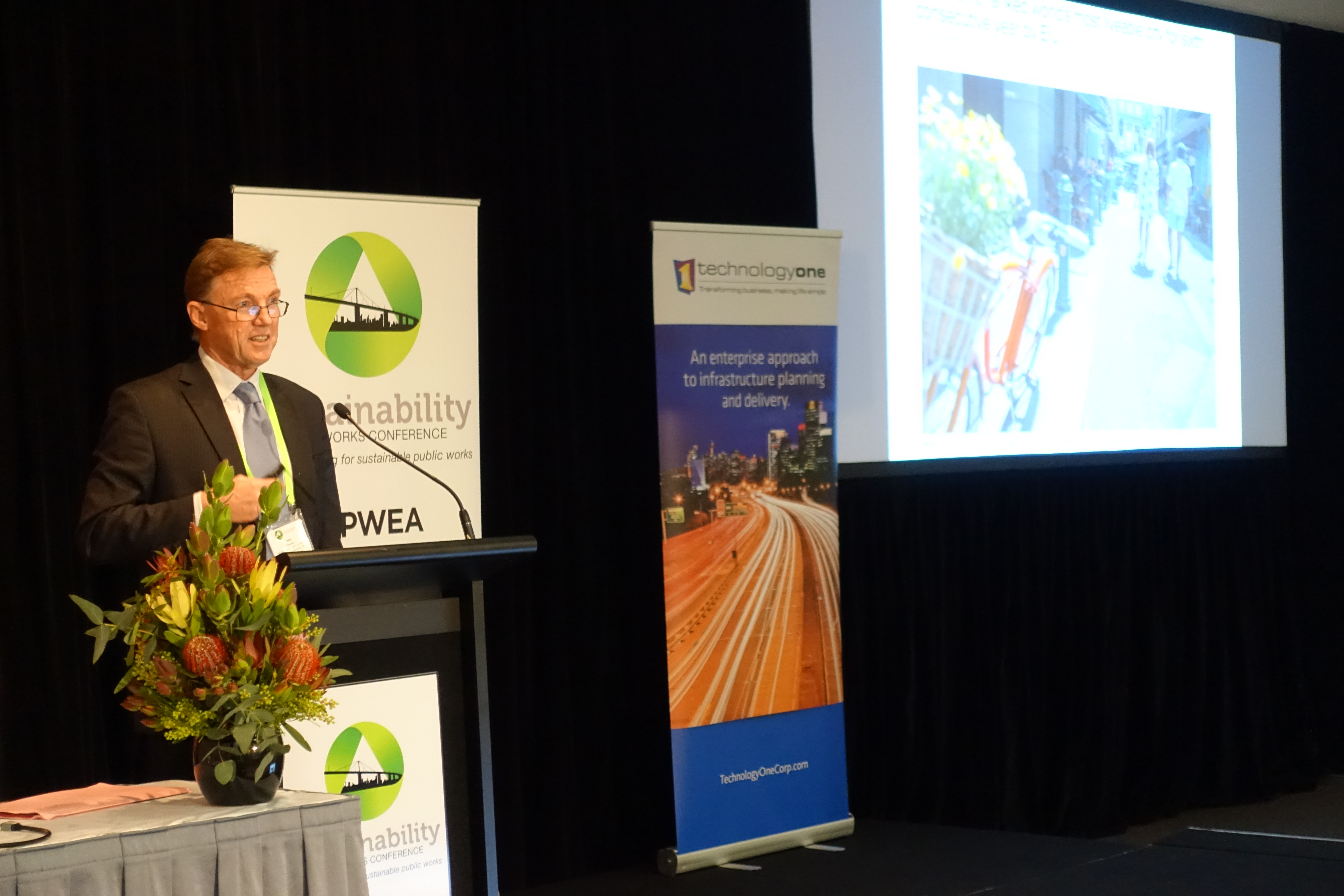Local governments in Australia can create happier, healthier and more equitable communities by following the UN’s Sustainable Development Goals (SDGs).

This is according to John Thwaites, keynote speaker at IPWEA’s Sustainability in Public Works 2016 conference.
Opening the conference today, Thwaites – a former Victorian Deputy Premier and now Chair of ClimateWorks Australia and the Monash Sustainability Institute – told attendees every Australian council should using the SDGs to create sustainable, inclusive and low-carbon communities.
What are the Sustainable Development Goals?
Adopted by world leaders in 2015, the 17 UN SDGs, consisting of 169 targets for achievement by 2030, seek to eradicate extreme poverty and hunger, promote economic growth and prosperity, improve health and education and protect the planet.
The goals range from eradicating poverty and achieving gender equality to ensuring clean, green energy is available to all.
Although businesses are becoming increasingly interested in the SDGs and in aligning their business planning with the goals, Australia is lagging behind many other developed nations.
A new index places Australia’s performance on the SDGs at 20th in the world, trailing behind Canada and many European countries.
Thwaites says the Australian response to the SDGs has been “gradual”.
“It hasn't been as large as in the fast developing countries of Asia. In Asia the goals are central to planning,” he says.
“In Indonesia, the planning agency uses the goals and the framework for making decisions. Similarly in China, across China departments.
“In Australia I think you're seeing some large companies, view the goals as important: partly from a reputational point of view, partly from an opportunity point of view and partly as a good framework for decision making.”
How you can use the SDGs
Far from being an abstract set of idealistic goals, Thwaites says the SDGs constitute a concrete set of benchmarks for councils.
“Local governments around the world are beginning to use the goals to plan what infrastructure and services should be provided in their areas and to map what their impact is on the goals,” he explains.
“We're seeing a number of local governments making the goals very practical for a local area. So for the goal on energy – how much energy is your municipality using itself in its own operation? How much is the community using within the municipality? How can you promote renewable energy?
“When they consider infrastructure, councils should consider the goals and targets concerning their municipality, and then benchmark what they’re doing against that.”
Of course, sustainable communities are about more than just looking after the planet; social equality is just as vital a consideration for governments, Thwaites says.
“It means, when we build infrastructure, thinking of the multiple impacts that that infrastructure makes and we want to seek multiple benefits from, not just think of it as serving one purpose,” he explains.
“So if we're building water infrastructure, we don't just do it for water supply or sewage treatment, we ask 'What's going to be the impact of that on the society, what's the environmental impact, what's the social impact?'.
“Essentially, the goals are about integrating economic growth with social inclusion and environmental sustainability, because that's what makes people healthier and happier and better as a society.”
Why we need the SDGs now
Infrastructure development is ramping up around Australia, as every level of government searches for solutions to congestion and urban sprawl.
That is what makes the SDGs so important right now – there has never been a more critical time to bring a holistic viewpoint to infrastructure.
“The world is growing so fast that unless we grow in a way that's sustainable we're not going to be able to keep growing without major problems,” Thwaites says. “The well-being of people all around the world, including Australia, depends on balancing economic, social and environmental goals.
“People want prosperity, a better and healthier environment to live in, and they want a fairer society. They want good health and good opportunities.
“Engineers building infrastructure are there to serve society. They do that partially through the construction of the actual piece of infrastructure – but it’s the impact that infrastructure has on society that really matters.”
The IPWEA Sustainability in Public Works 2016 Conference is running from August 24 – 26 in Melbourne.
Tweet using the hashtag #SUSTAIN2016, and visit https://www.instagram.com/ipwea/ to check out conference photos and videos.